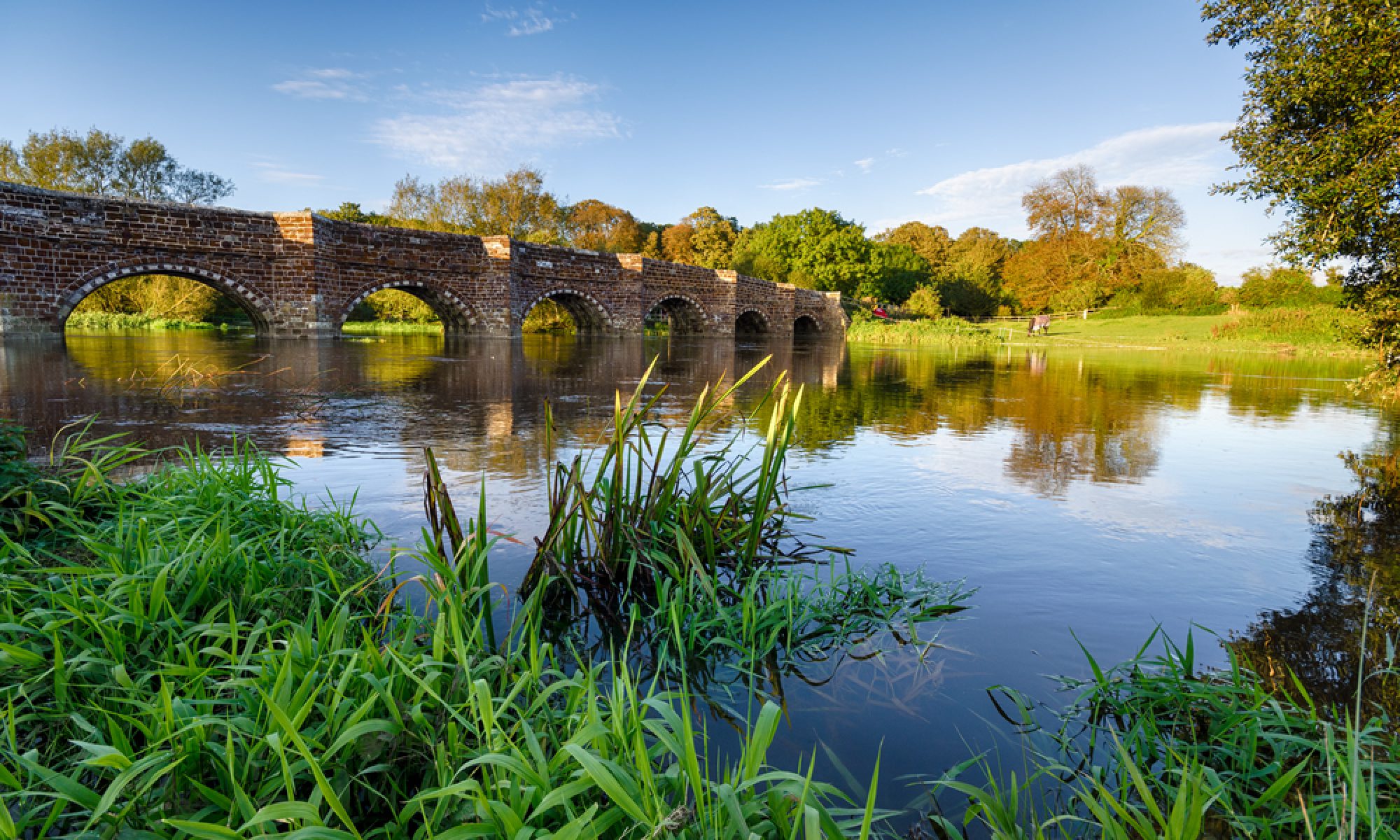
The Sturminster Marshall Platinum Jubilee Trail has been created to celebrate the Queen’s Platinum Jubilee and recognise her 70 years of service to the country.
A variety of buildings and sites of historical interest have been identified through the village and are marked by Jubilee trail markers containing QR codes that link to this website. The trail starts at St Mary’s Church and passes in a circular route through the village to include Trafalgar Green, Walnut Tree Field, Timber Green, Stocks Green, Charborough Green, Churchill Close Green and Maypole Green (The Old Market Place).
You can view photos and detailed information below and download a map that shows the location of 15 trail marker signs. You can start at any point and take a walk of discovery through Sturminster Marshall village and learn about its unique history through the past centuries.
1. St Marys Church and Churchyard
The name Sturminster means a large church on the Stour. There is evidence of a settlement in Mesolithic times but the first written records date back to 880 AD. The name Marshall was added later and refers to William Marshall, one of the Knights who witnessed the signing of The Magna Carta in 1215.
St Mary’s church was built in Norman times on a previous Anglo Saxon site and was originally known as St Peters. There have been a number of improvements over the centuries and a major restoration took place in 1860 after the bell tower fell down. Today the Church is the centre of a thriving community and contains various items of historical interest and is well worth a visit.
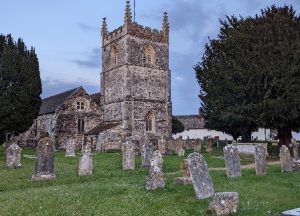
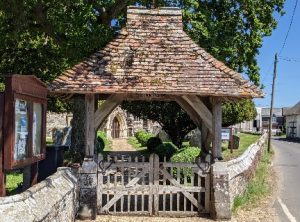
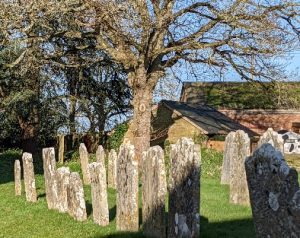
Church Cottages
Church Cottages opposite the church date back to the 16th Century and contain original timbers such as the dog leg beam above the front door at #184. In 1976 a passing haywagon caught fire and the fire spread to the thatch and most of the roof line was destroyed.
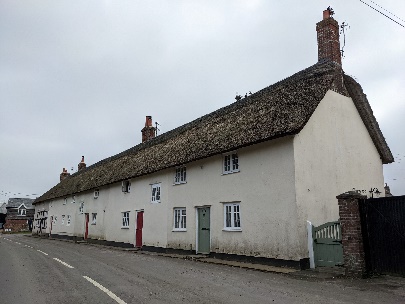
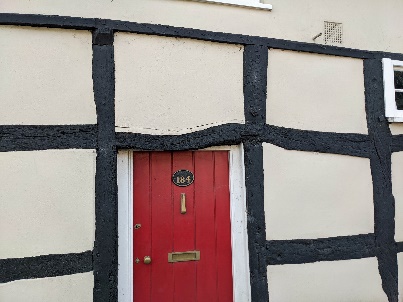
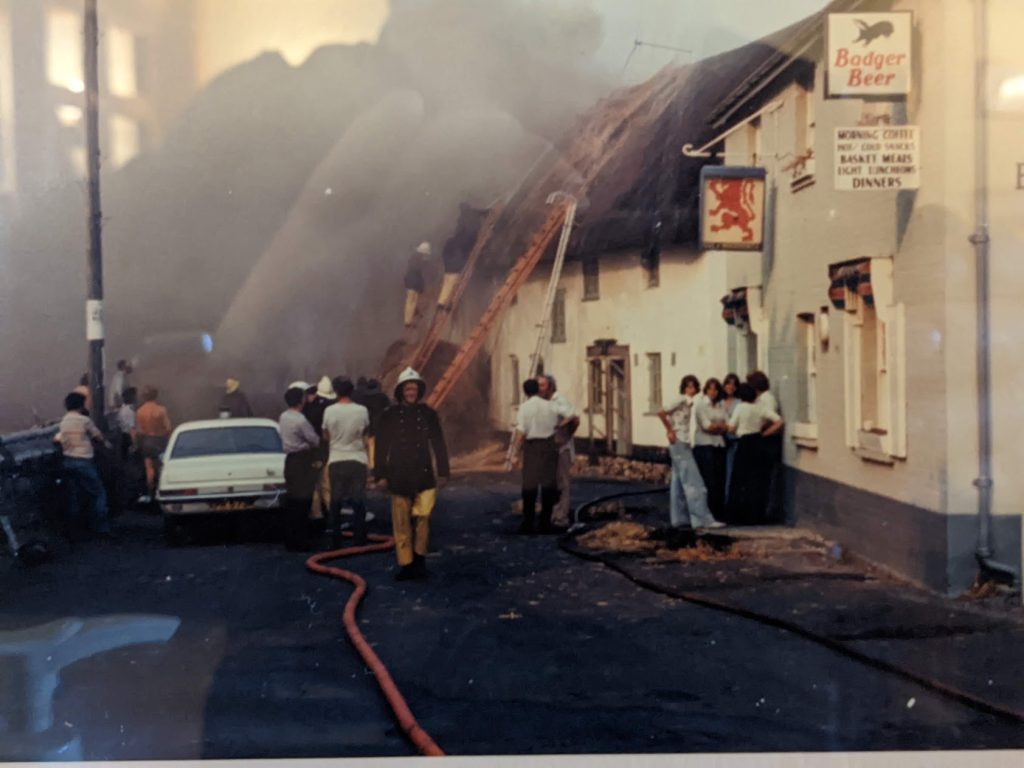
Red Lion Inn Public House
The Red Lion Inn has been serving food and drinks for many years and has become a well established part of village life. It is a popular spot for both locals and tourists and offers a varied menu and large sheltered garden, ideal for families. See www.redlionsturminstermarshall.co.uk
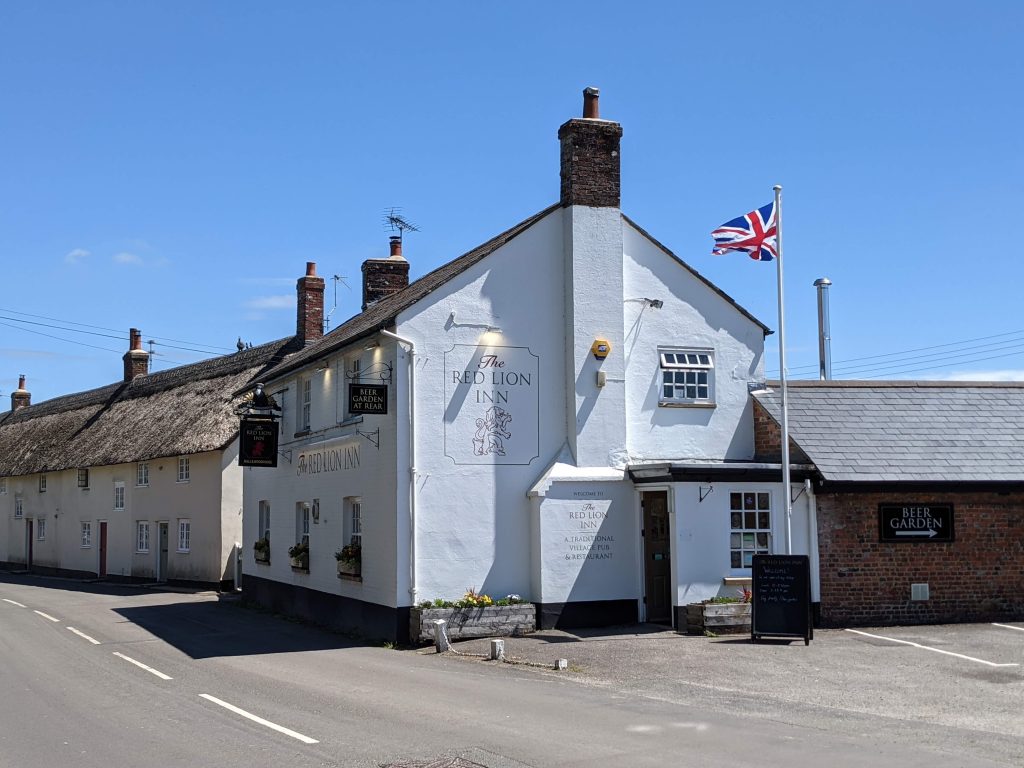

Old School Building and The Mackrell Charity
The Mackrell Charity was founded in 1799 by William Mackrell to provide a school and two teachers to educate poor children of the village and surrounding area.
Today it is an active hub for lifelong learning and cultural activites for the local community. See www.mackrellcharity.org
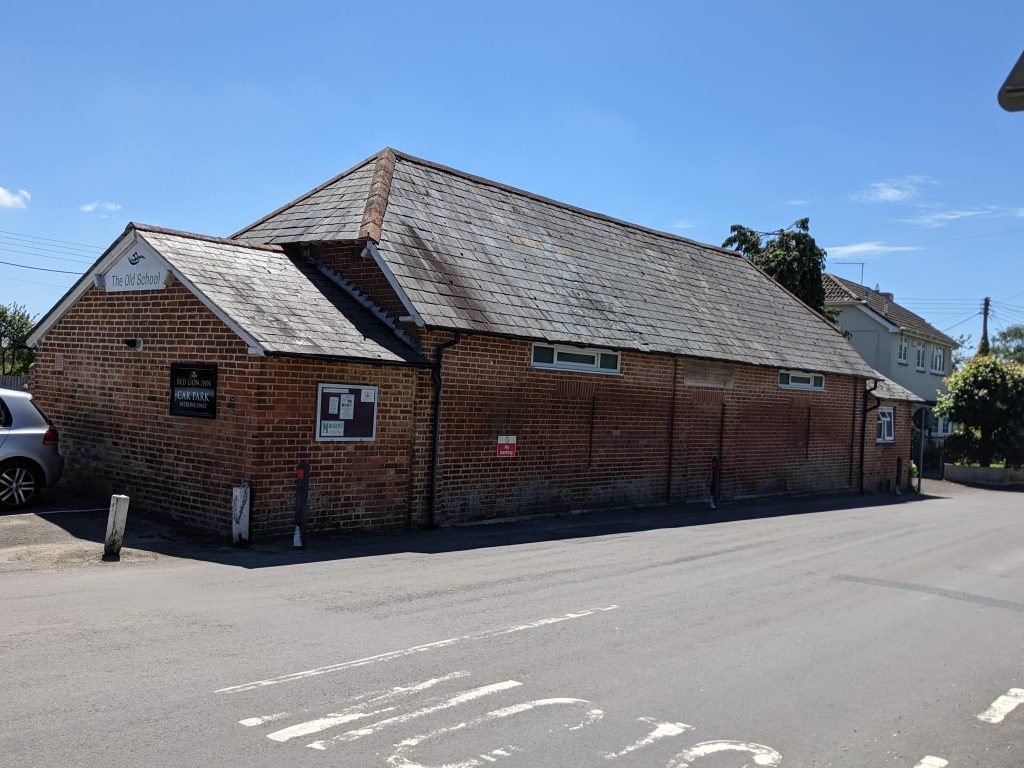


2. Trafalgar Green and Cottage
Trafalgar Green was named after the Battle of Trafalgar and the oak tree was planted to commemorate it’s Centenary in 1905. The adjacent Cottage is a grade ll listed building.
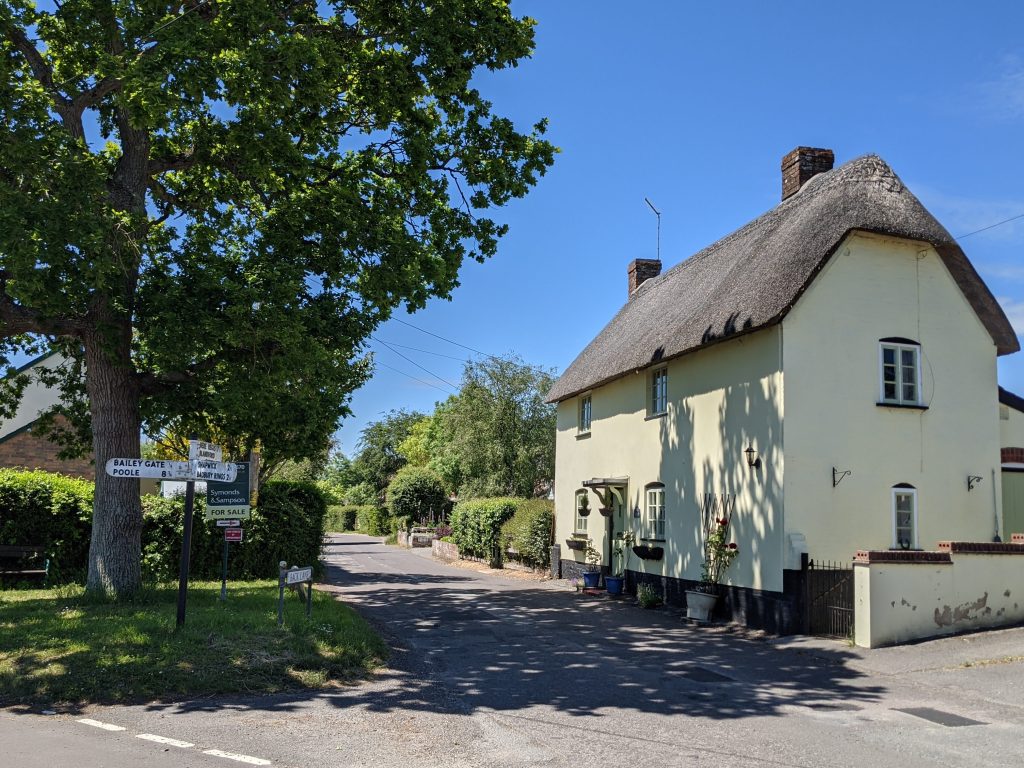
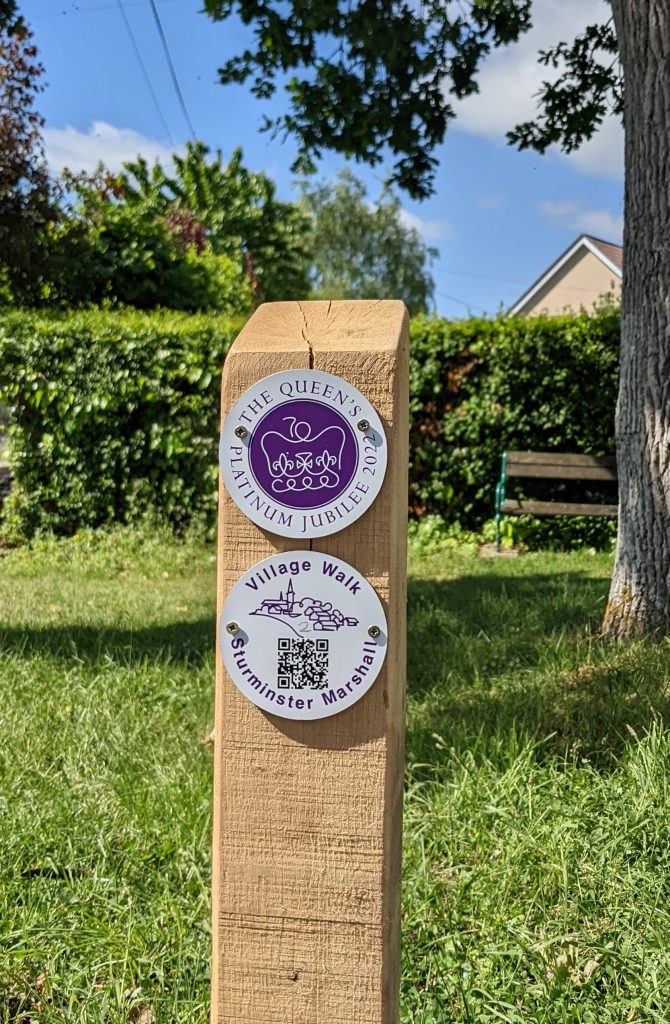
3. Walnut Tree Field
The Walnut Tree field is a Scheduled Ancient Monument and marks the site of settlement on the banks of the River Stour that is thought to date back to the Iron Age. Today it is a pleasant public area and ideal to relax and enjoy a riverside picnic. The old Walnut Tree was recently damaged in a storm and we have plans to carve a piece of fallen trunk into a new seat.


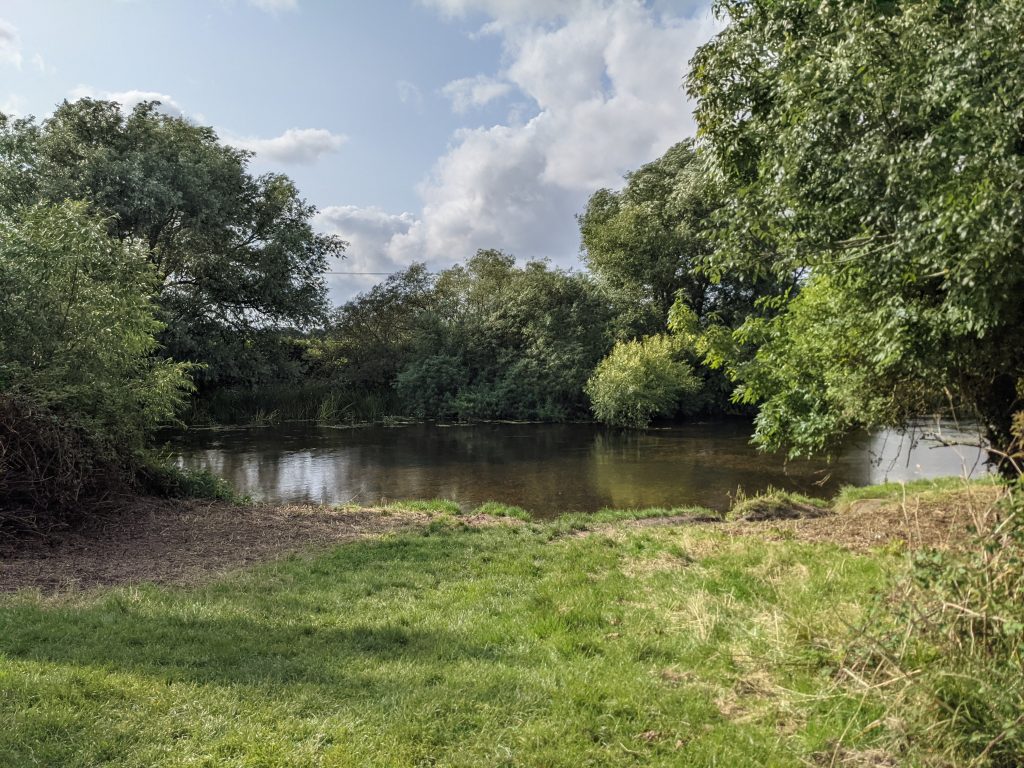
4. Johnnies Ditch
Johnnies Ditch is the site of the former village watering hole where drovers watered their flocks when passing through the village.
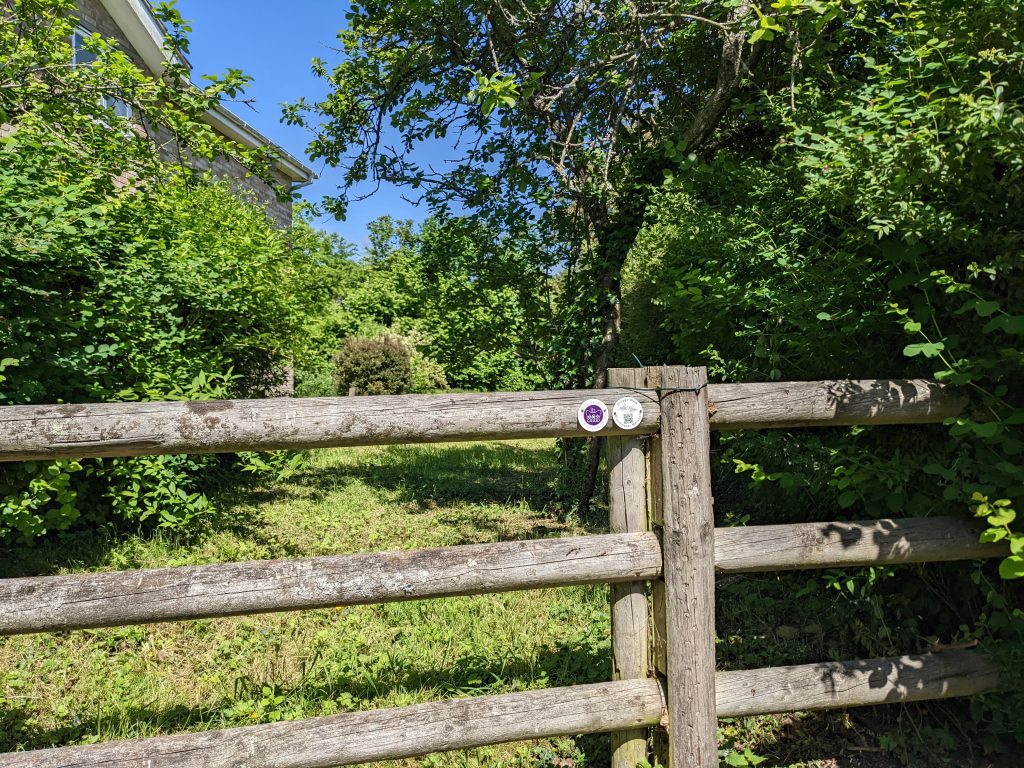
Waldron Cottage and Cross Cottage
Two of the ancient listed buildings in the old part of the village.
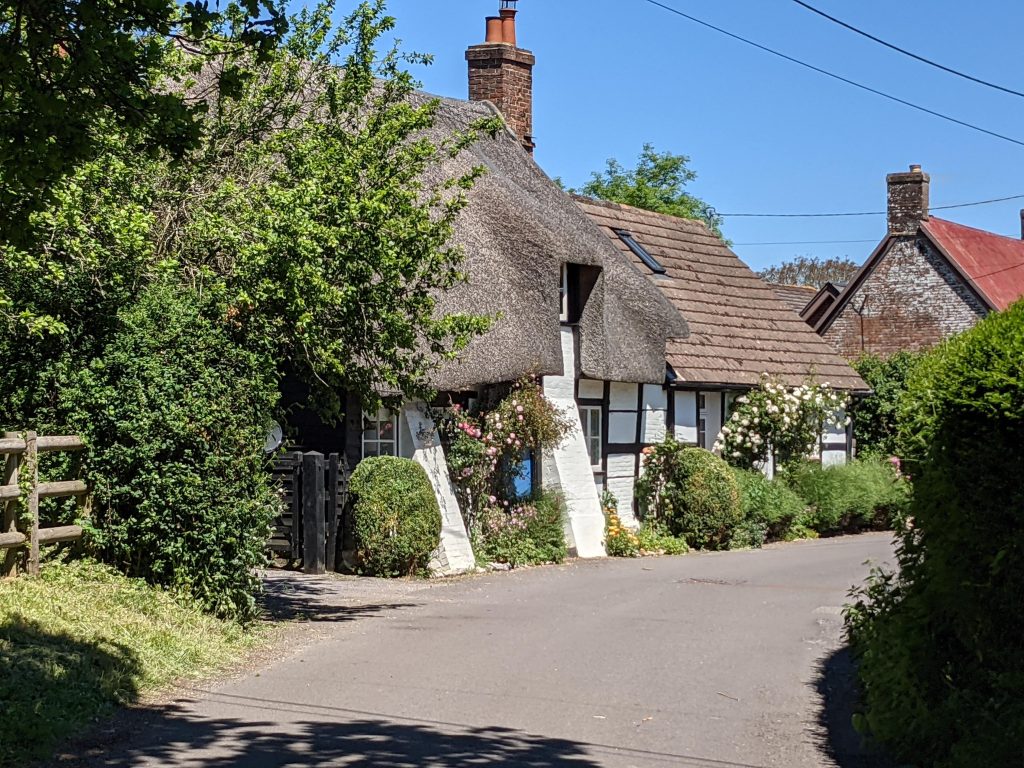
5. Timber Green and Stocks Green
Timber Green and Stocks Green are actually two different greens. Timber Green was used to store tree trunks whilst they were waiting to be processed for building materials. Stocks Green was the location of the village stocks that were used up until the 1860’s. The replica village stocks were installed in 1986. A book box has been created in the old red Telephone Box and has a collection of titles to borrow and exchange.
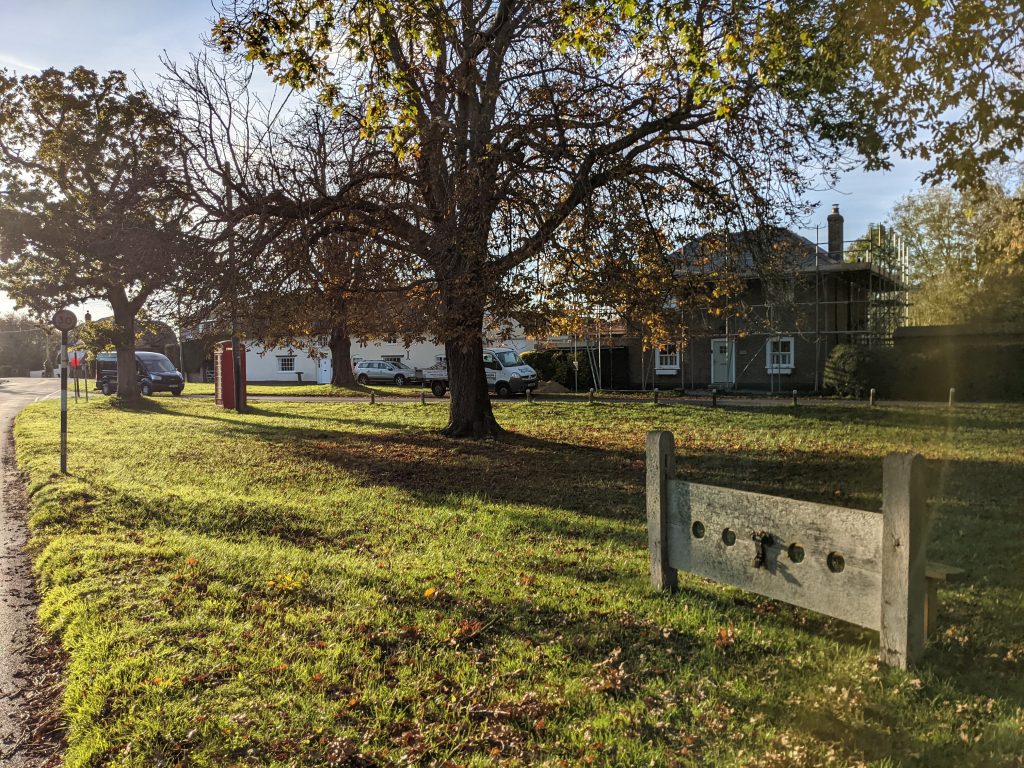

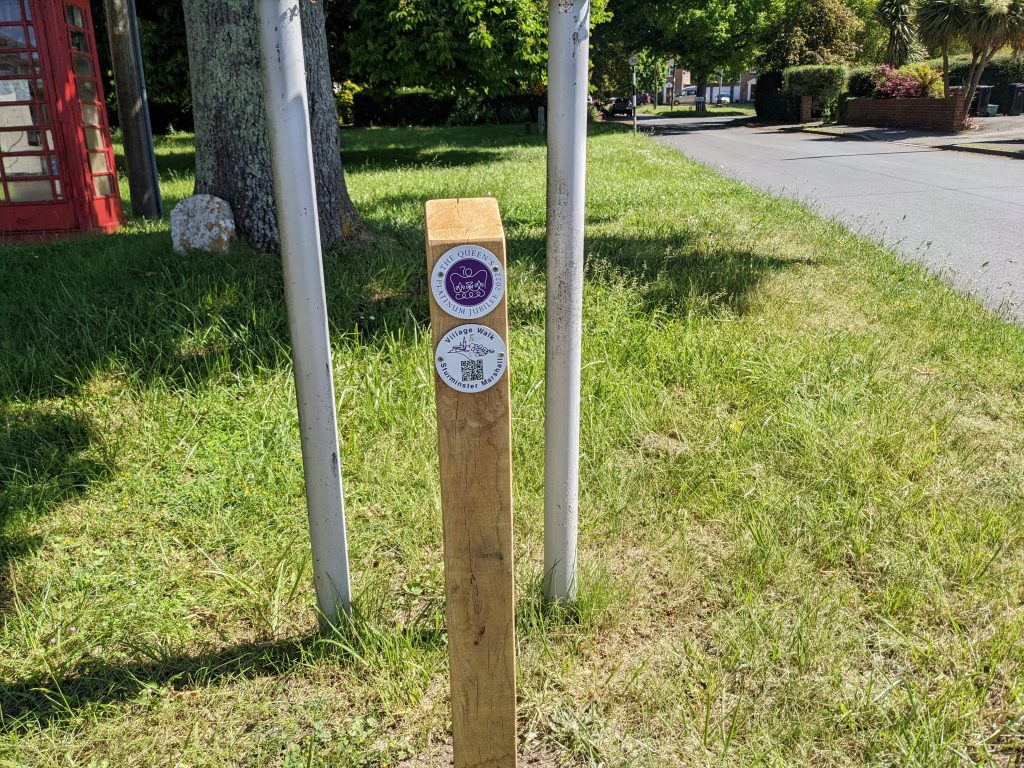
Stourfield
Stourfield is a listed building and was once the site of the old village slaughterhouse.
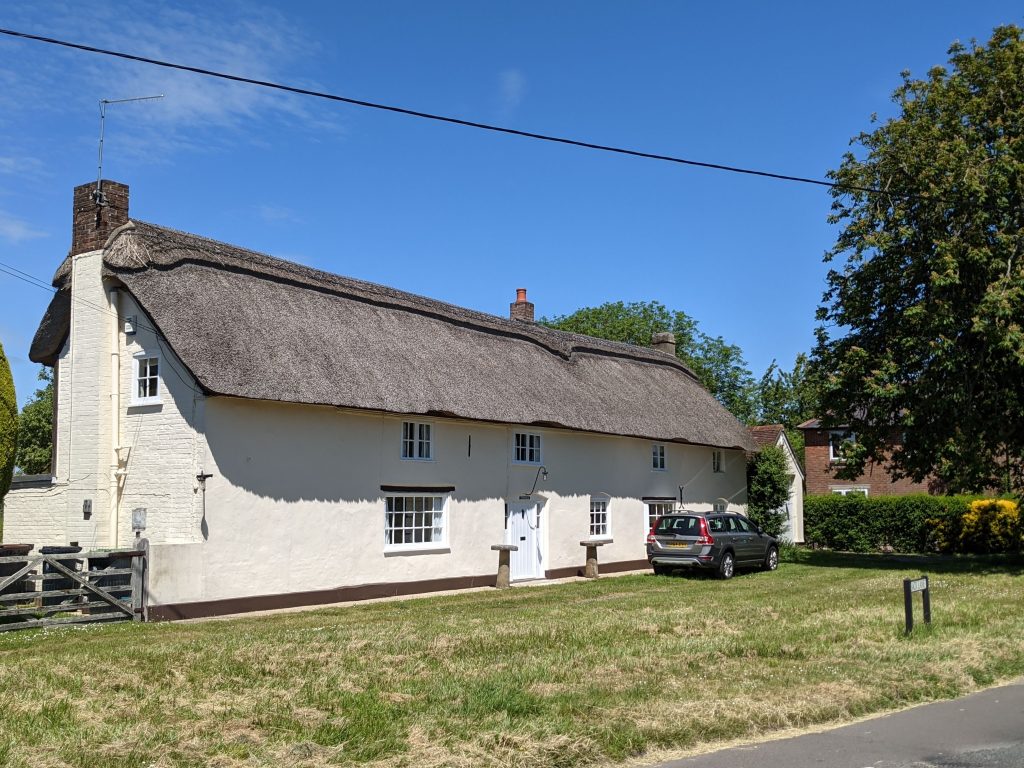
Wheelright's bonding stone
Ancient wheel bonding stone taken from the nearby old village forge

Juniper Cottage and Chapel Cottage
There is an unusual weather vane on the roof of Juniper Cottage and Chapel Cottage was named after the Old Congregational Chapel that was adjacent to it.

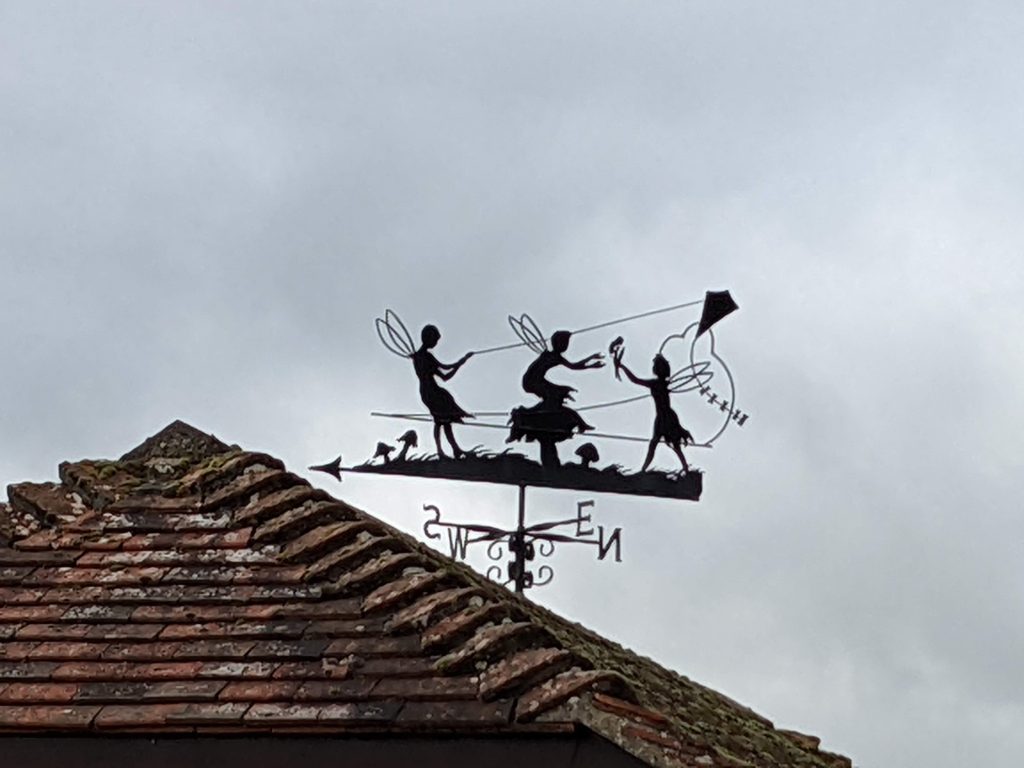
6. Packhorse Bridge
The old Packhorse bridge over the River Winterbourne dates back to the 17th Century. Before the railways and turnpike road were constructed, it was on a major route along the Stour valley from Wimborne to Blandford.

7. Trailway
The Trailway follows the old Somerset and Dorset railway line and is now a public footpath linking Newton Road with Railway Drive.
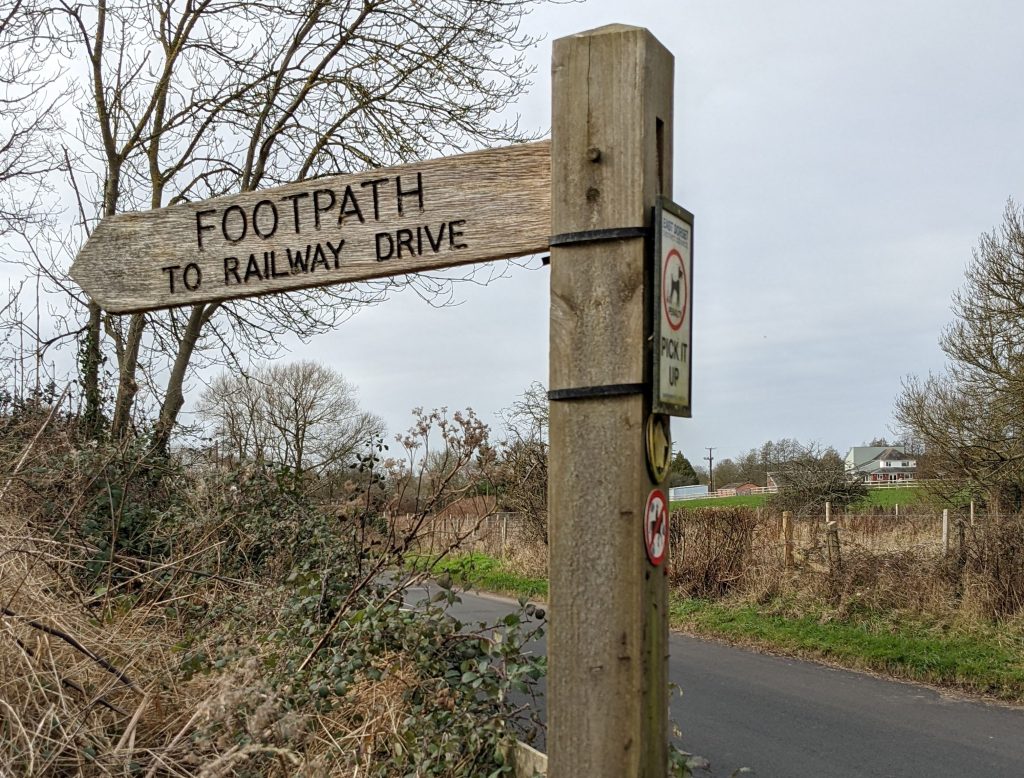
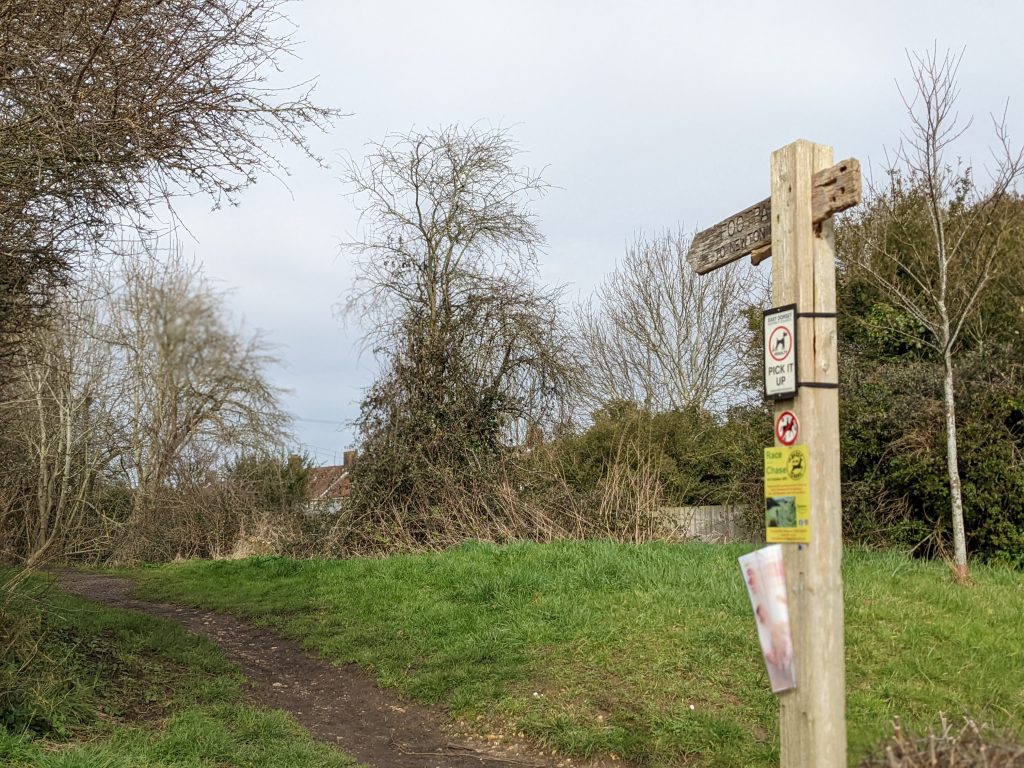
8. Charborough Green
Charborough Green is a small public amenity area close to a modern housing development. An oak tree was planted here to commemorate the Queen’s Platinum Jubilee in 2022.
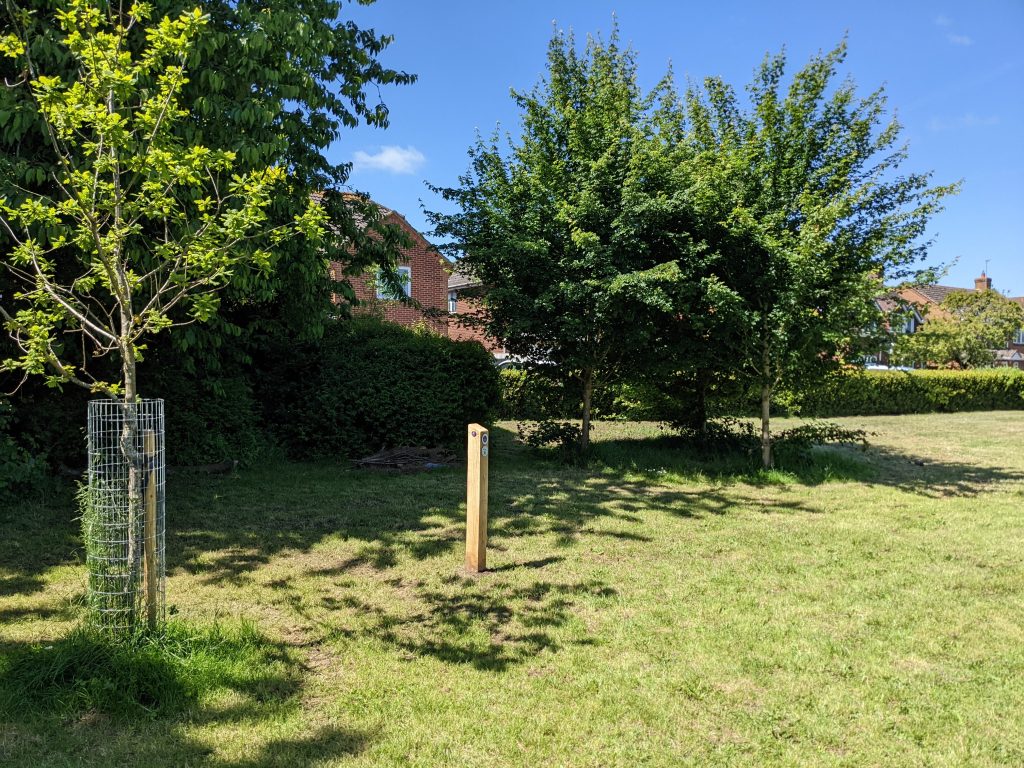

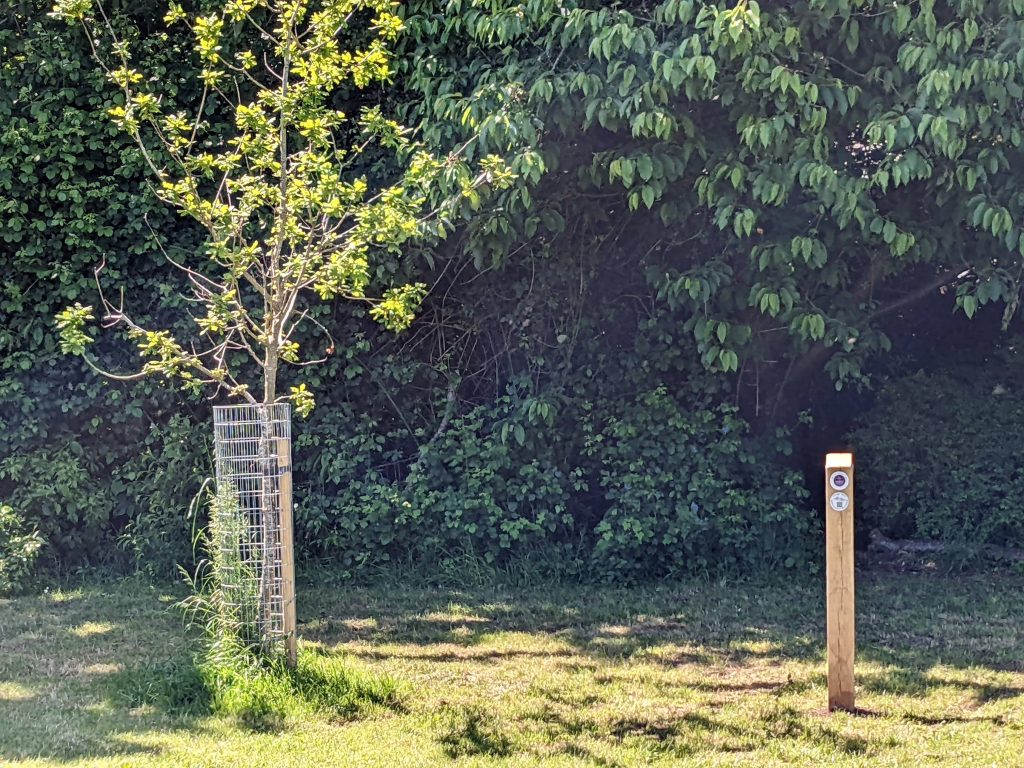
9. Baillie Gate Industrial Estate
Baillie Gate was the name of the railway station that was created on the Somerset and Dorset line from Poole to Blandford. It is also the site of a dairy originally established in 1888 that became a milk and then a cheese factory to process local milk. At one time it was the second largest cheese factory in Europe. Today it is the home of a small industrial estate containing a post office, pharmacy and shop serving the community.

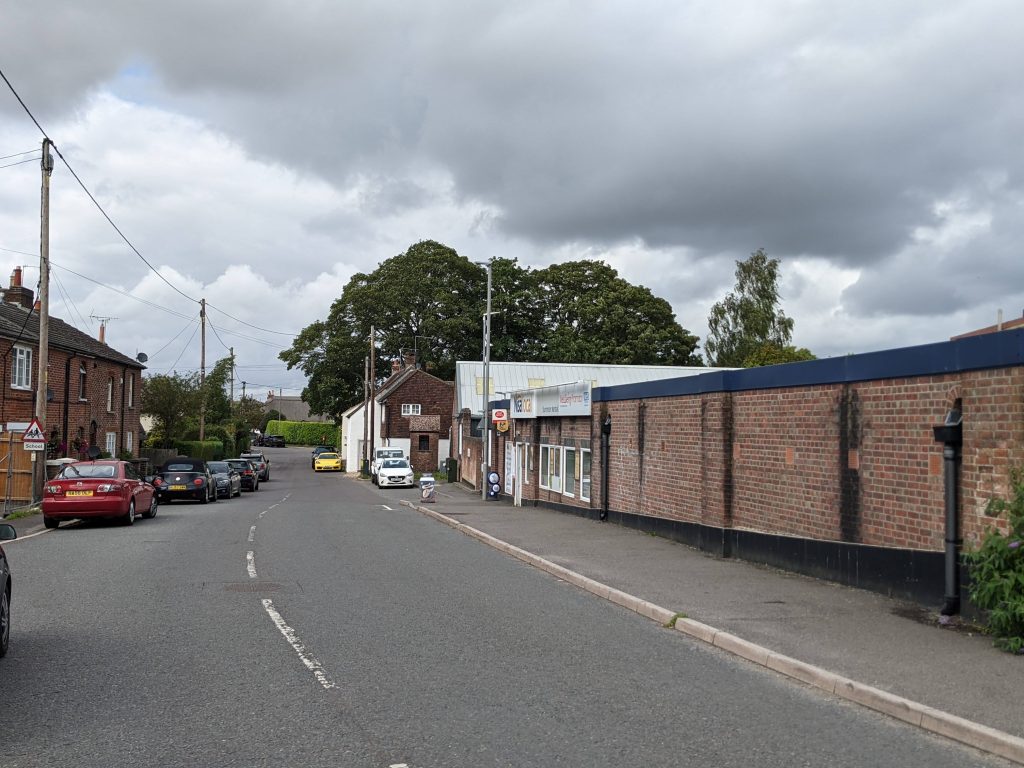
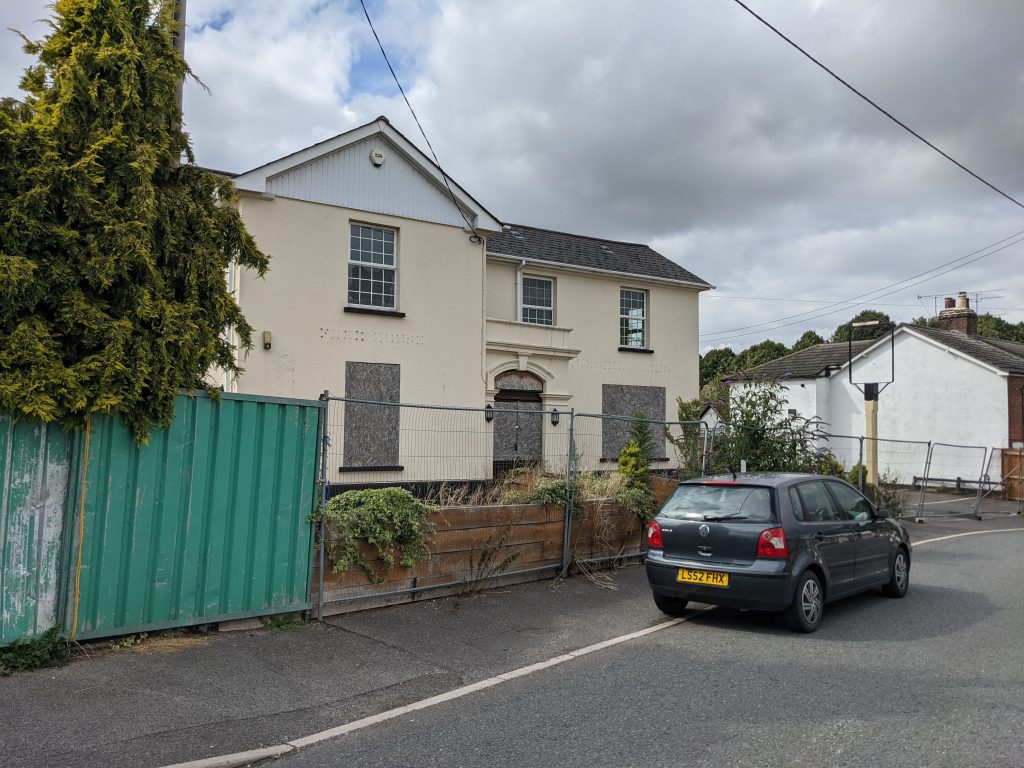

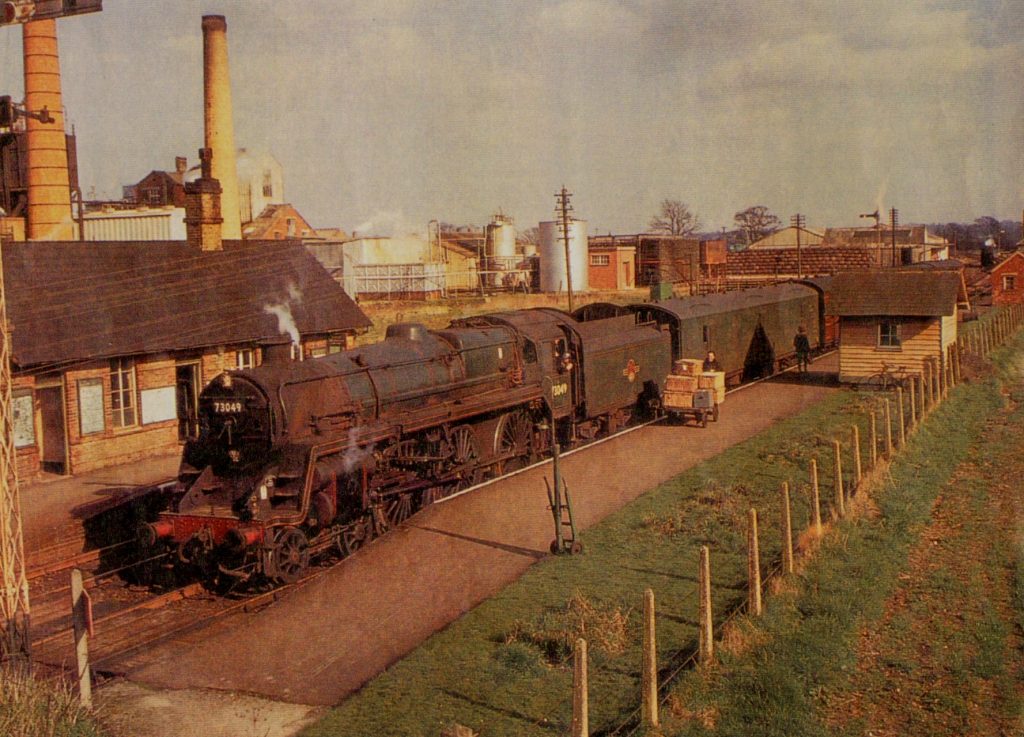

10. Sturminster Marshall First School
Sturminster Marshall First School was opened in 1911 and currently accommodates around 100 pupils in a small, friendly and secure setting. See www.sturminstermarshall.dorset.sch.uk. The Sturminster Marshall Preschool is on the same site. See sturminstermarshallpreschool.co.uk
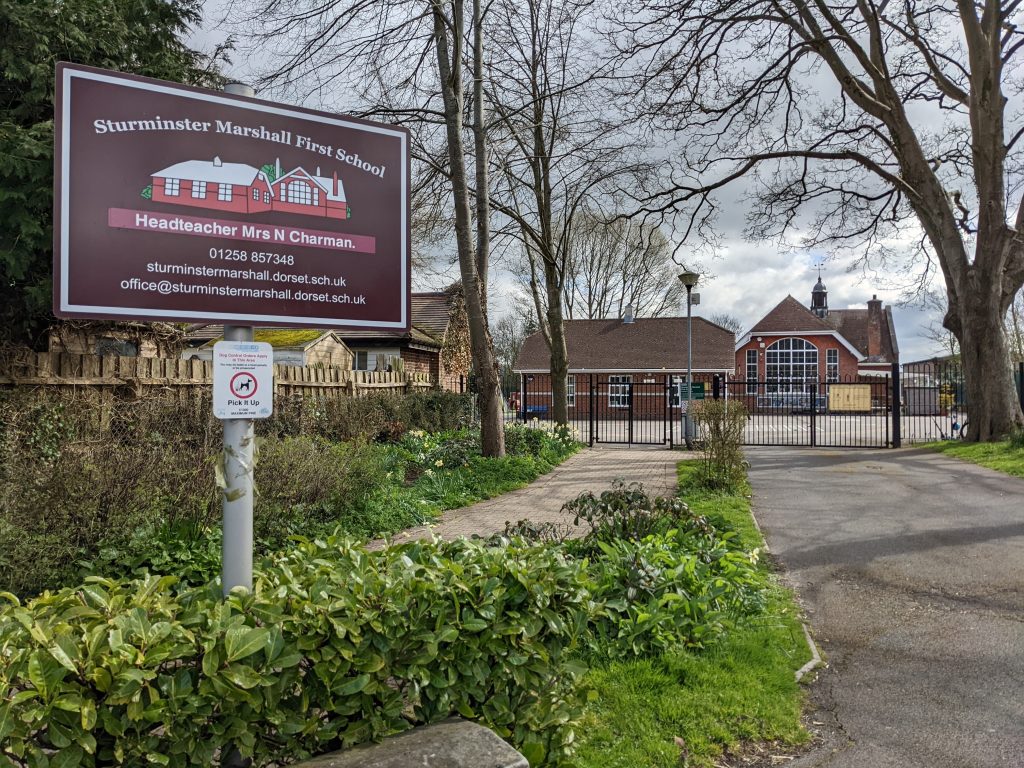
Johnny's and Joe's Cottages
Johnny’s and Joe’s cottages were named by the Parke family after their son died of pneumonia.

11. Memorial Hall and Churchill Close Green
The houses in Churchill Close were built for workers at the Cheese factory after the end of World War ll and received an award for their design.
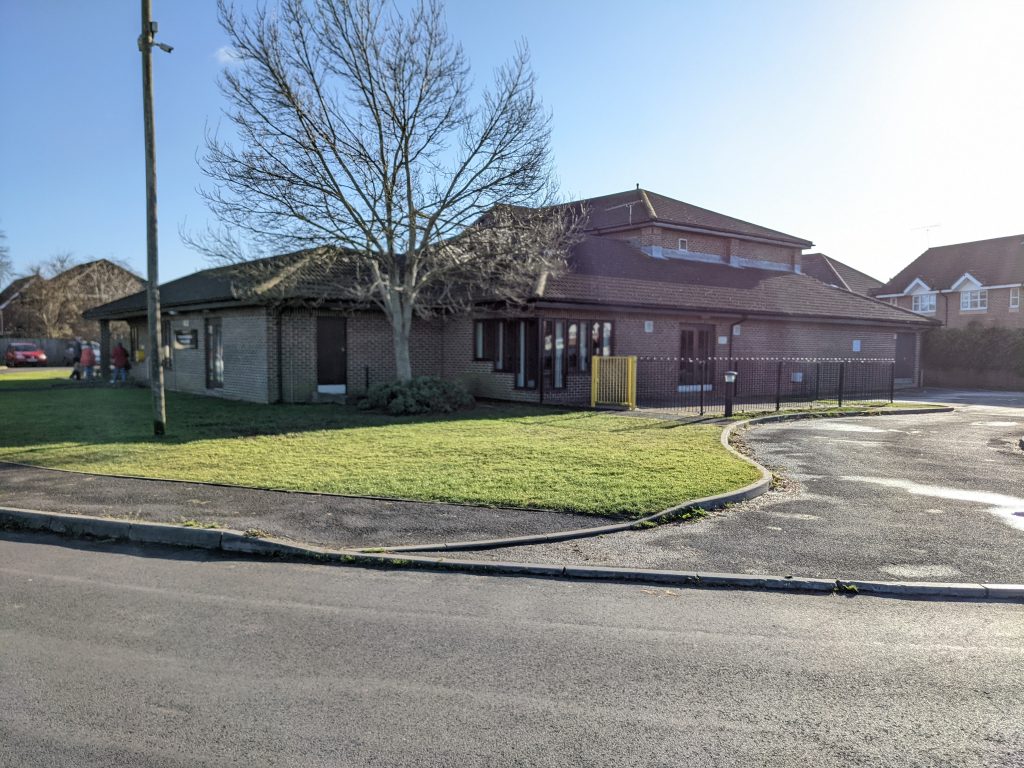


12. Holly Cottage and Keystone Cottage
Holly Cottage and the next door Keystone Cottage are both listed buildings and reputed to be the oldest cottages in the village.
Outside # 110 High Street is a small stone marking the depth of water during the floods of 1980. Since then, a large earth bund was constructed that follows the river contour and designed to protect the village.
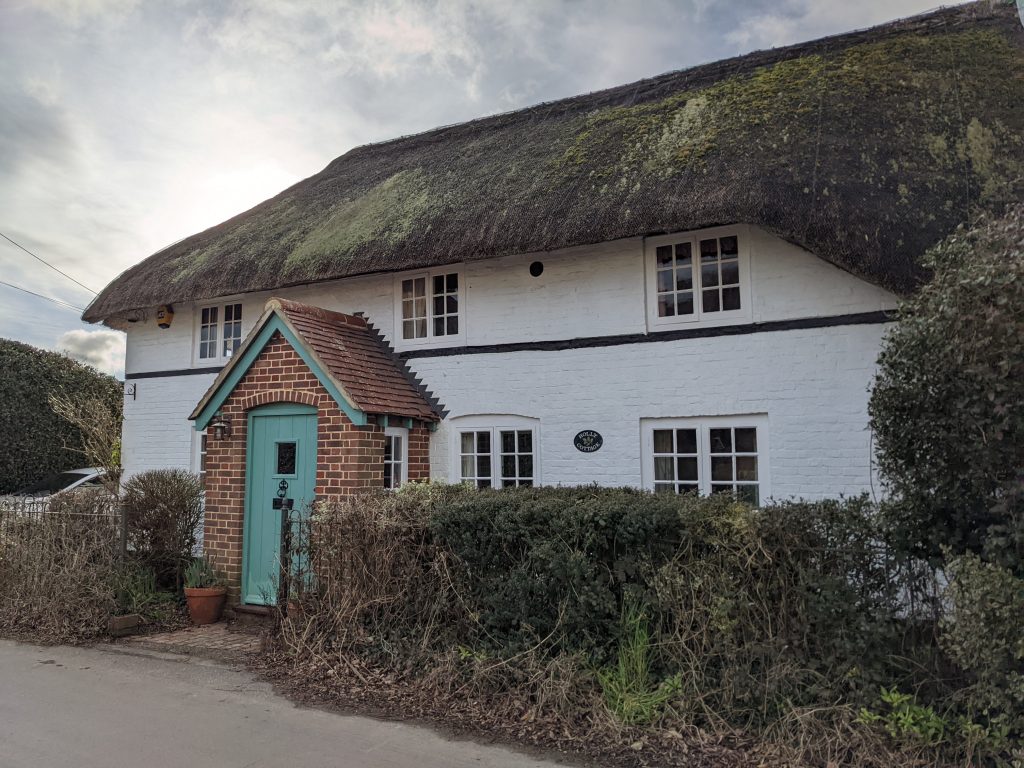


13.York House
York House is a distinctive red brick building that was a shop on the High Street. Behind # 128 is the site of Court Leet which was once a mediaeval court dispensing justice in the local community.
Almost opposite, between # 119 and 125 High Street, there was an ancient monastery that was established during the reign of Henry VIII but was sadly demolished during the last century.
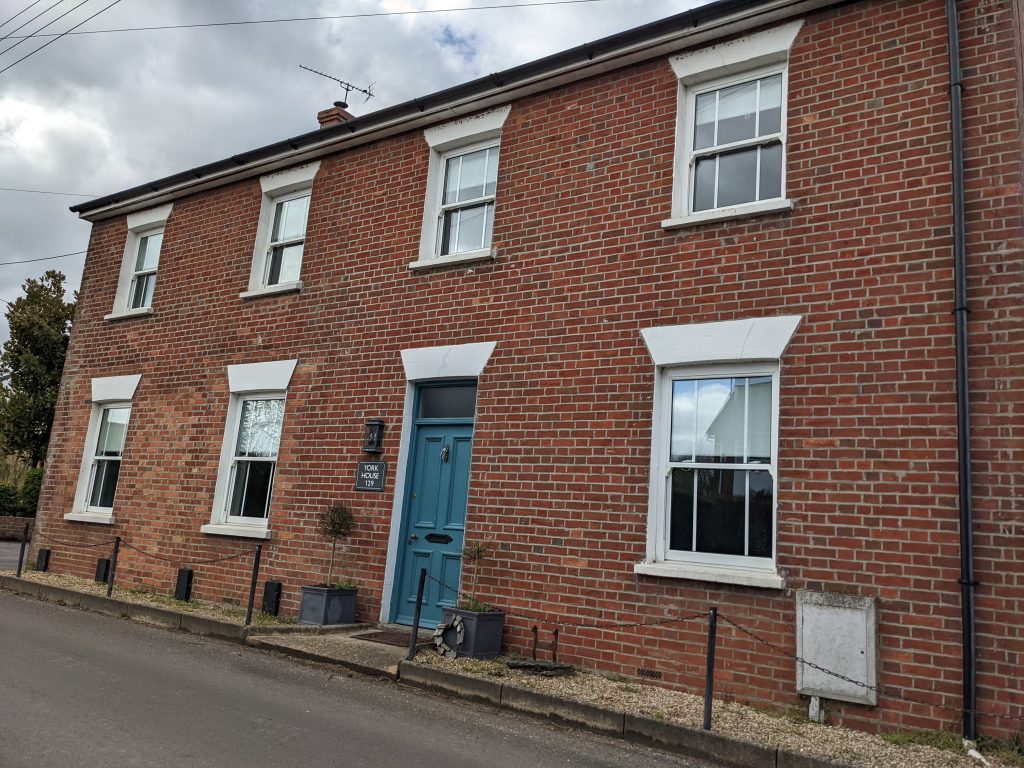
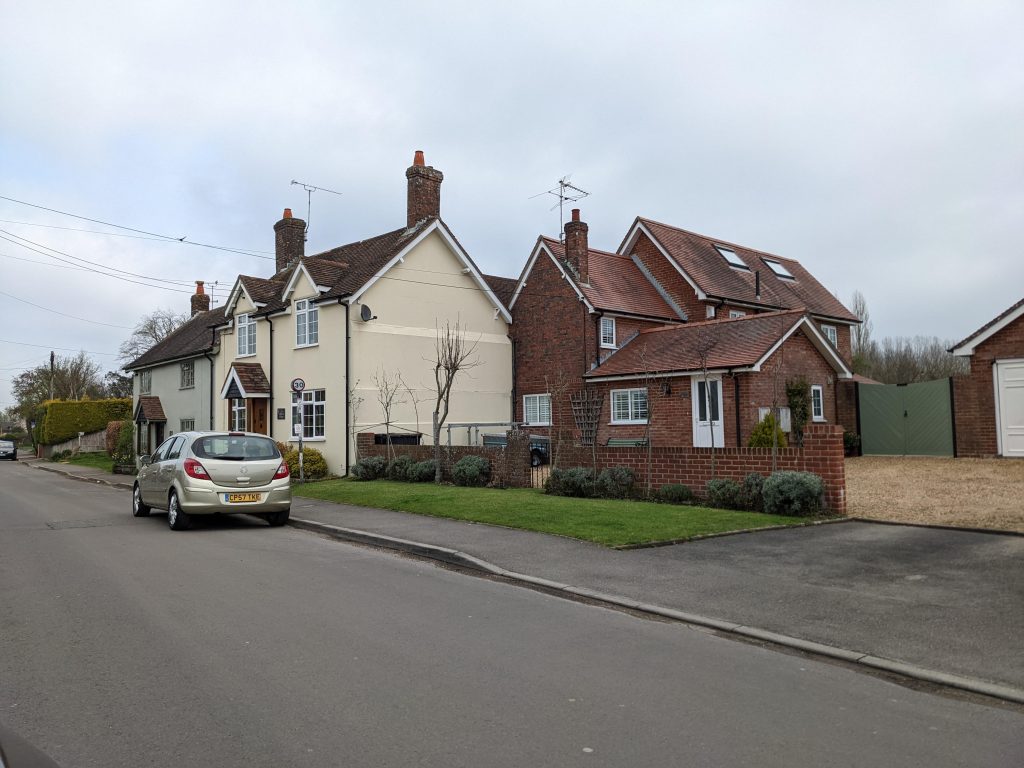
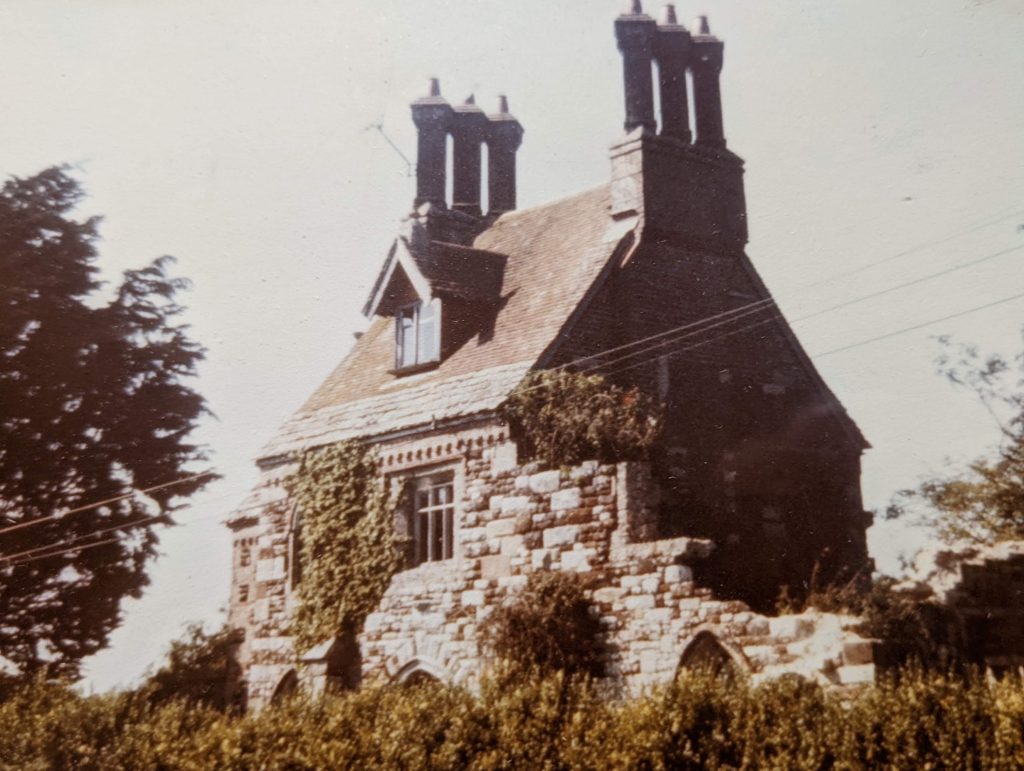
14. War Memorial
The Village War Memorial, in the style of a Celtic Cross with an intricate knot design was erected after the end of World War l in 1920 and commemorates the lives of local residents killed during the First and Second World Wars.
The RAF Memorial and Battle of Britain Memorial Plaque on the wall of the old barn opposite the War Memorial
Also nearby the picturesque Red Cottage that used to be a bicycle shop.

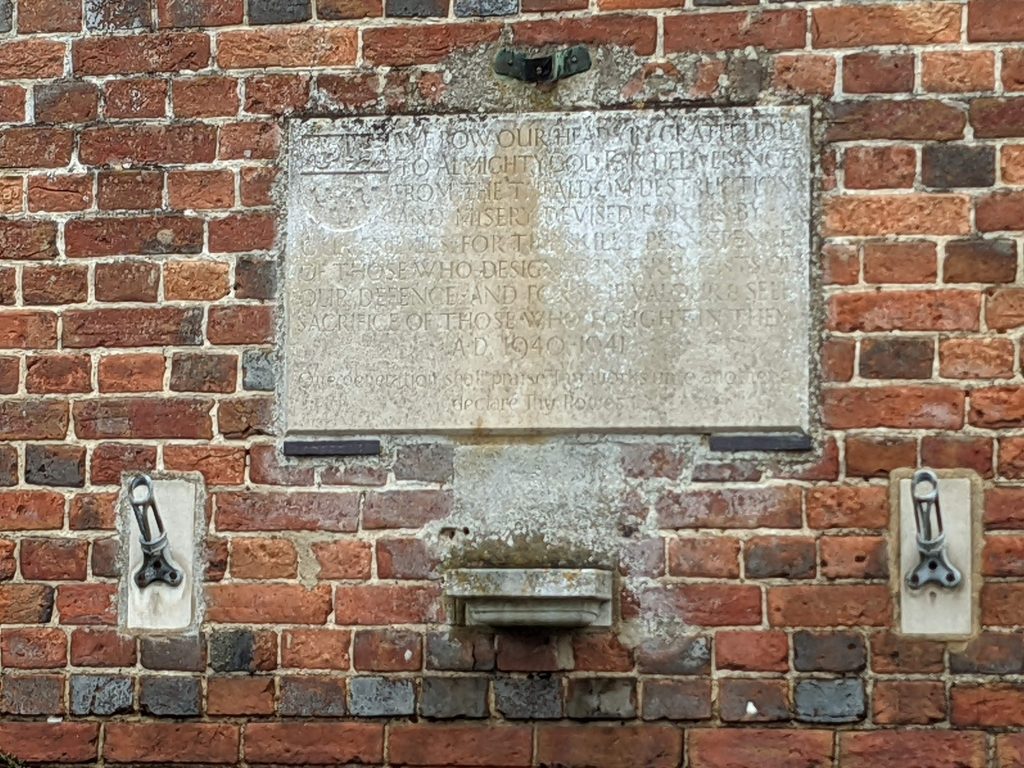
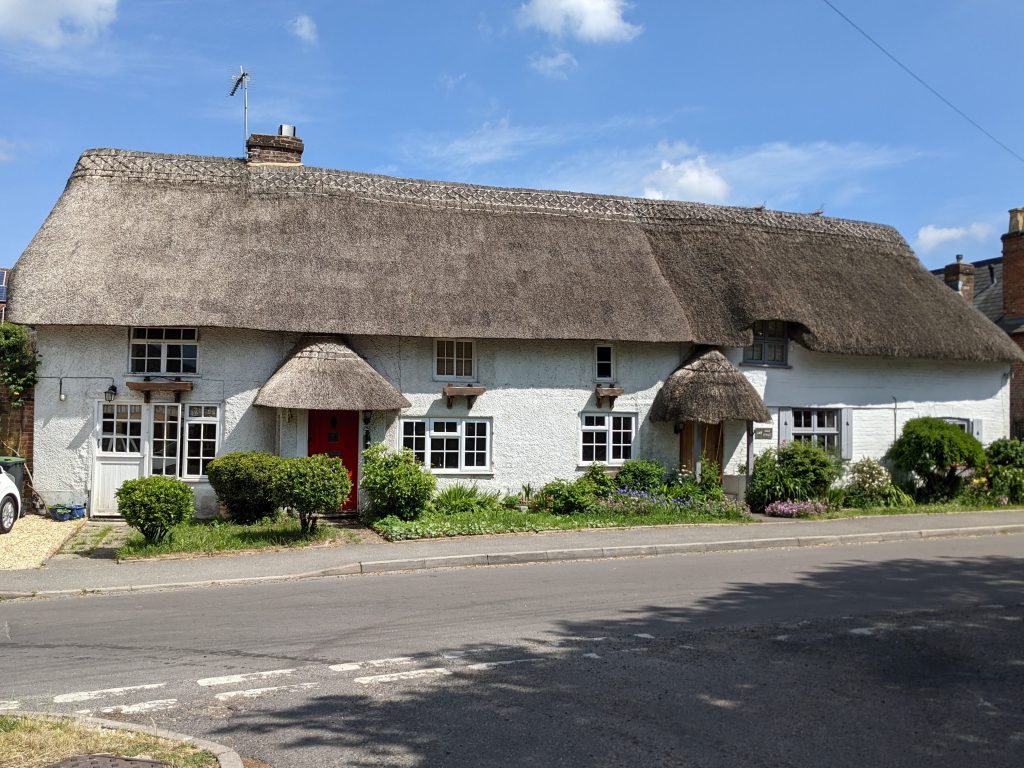
15. Maypole Green/Market Place
Maypole Green which was formerly known as the Market Place is used for village May Day celebrations. The original maypole is believed to have been installed in 1101 when the Earl of Pembroke granted a charter to hold an annual fair and was replaced for Queen Victoria’s Jubilee. The present maypole dates from 2011. The unusual weather vane is in the shape of a water rat and anyone born in the Sturminster Marshall village is known as a Water Rat.
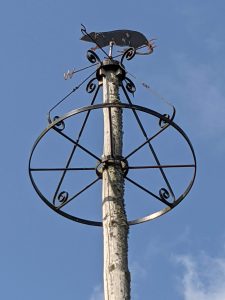

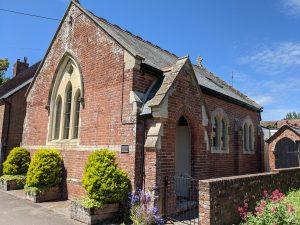
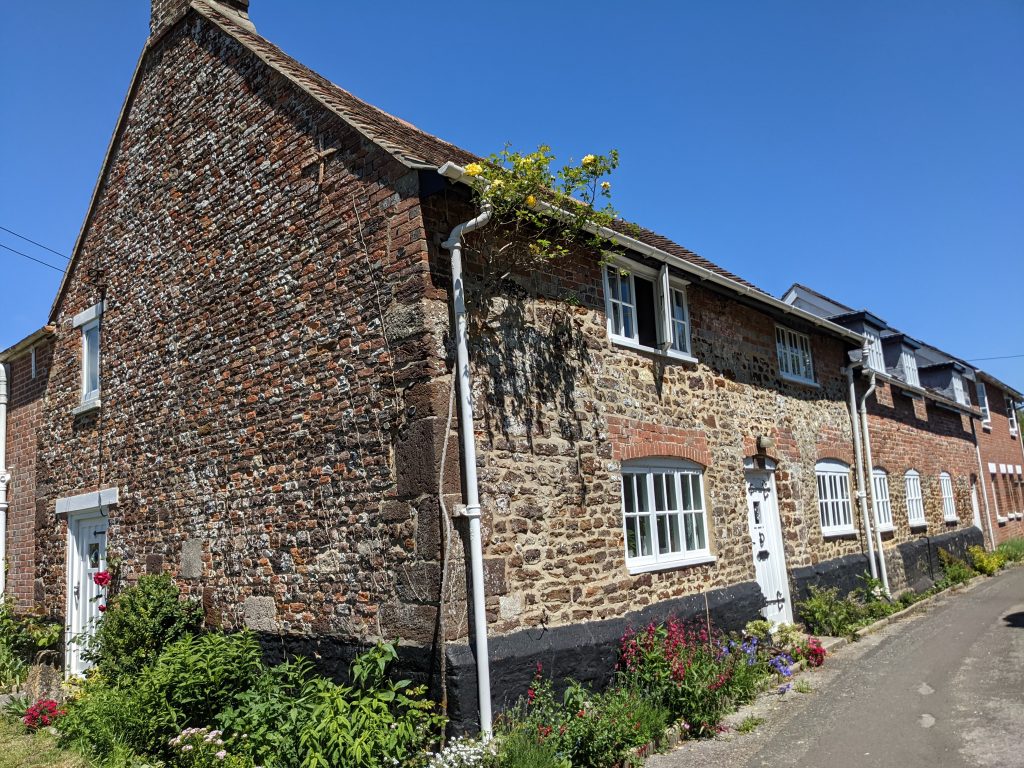
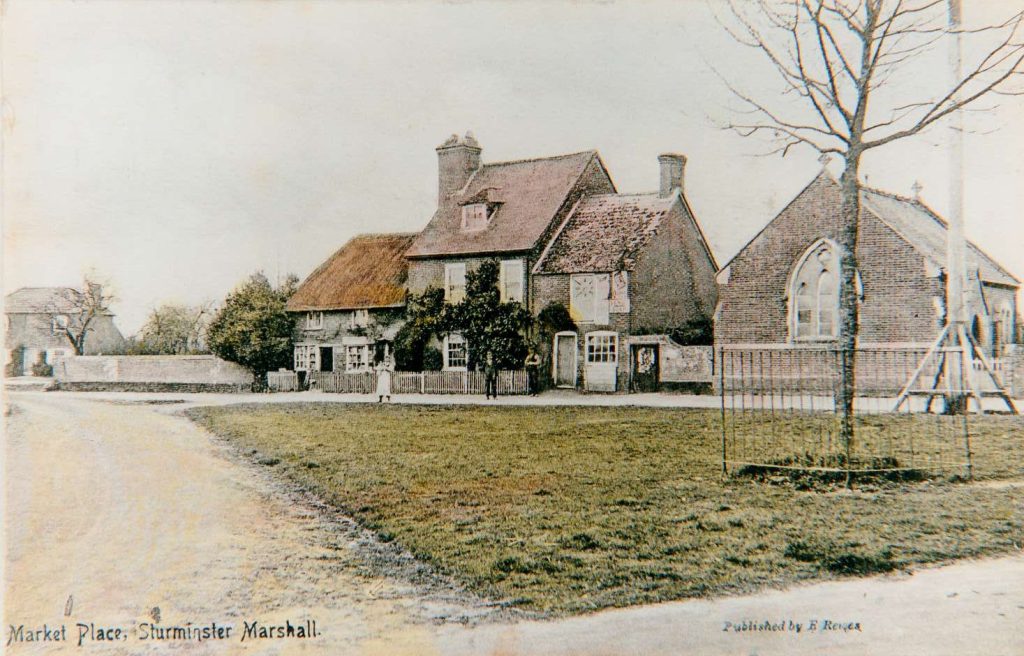
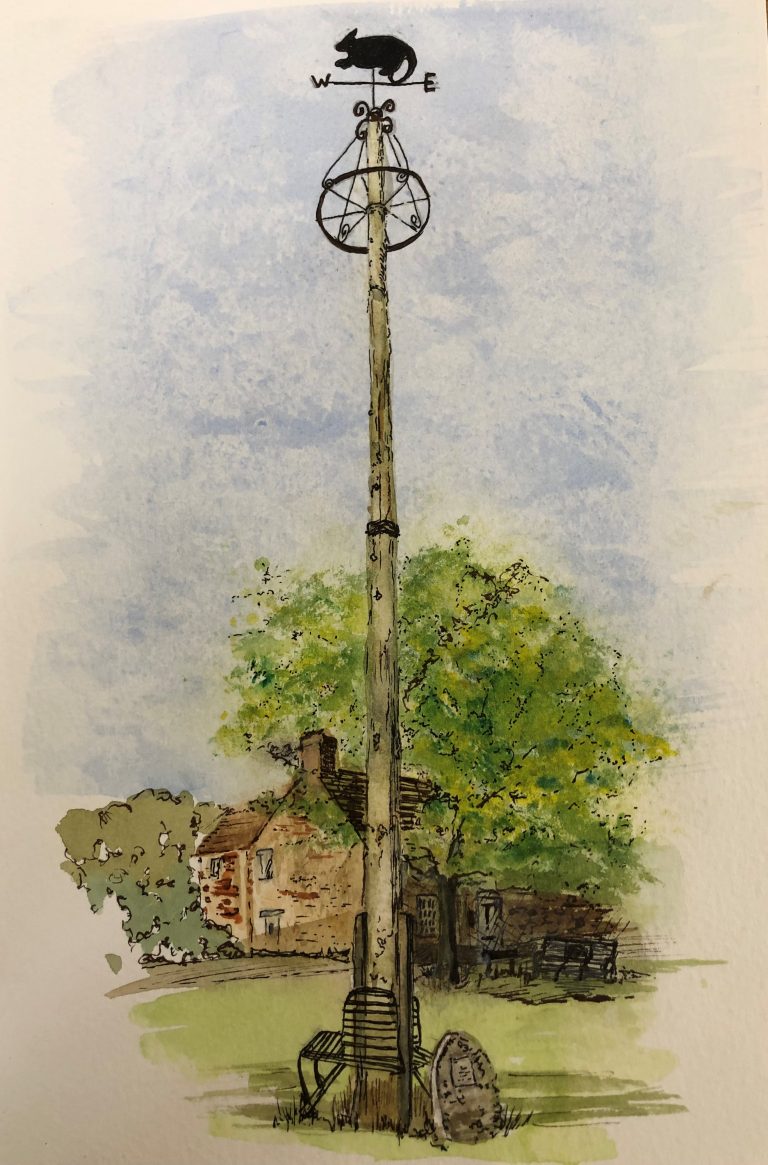
I wish to recognise the help and support given by the Sturminster Marshall Parish Council and various members of the local community, including the Reverend Justin Pottinger, Badg Champion, Harry Beaves, Tony Cross and Sylvia Cobb for the loan of various books and publications by Bill Coomer.
Gerry Clarke
Please let me have any further details, photographs and information that we can add to this website.
Gerry Clarke, Meadow Cottage, 200, Church Street, Sturminster Marshall, BH214BU Mobile: 07710 611123 Email: 3gclarke@gmail.com
